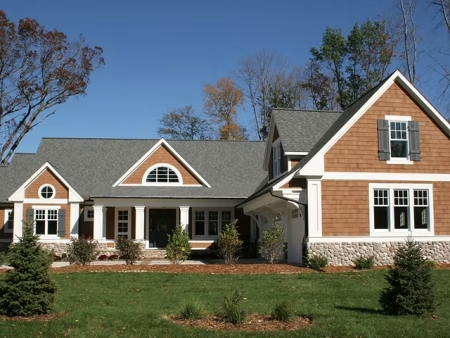Geotextile is a versatile and durable material widely used in garden mulching to enhance soil health, improve moisture retention, and effectively control weeds. Here’s how to use geotextile for optimal garden care:
1. What is Geotextile?
Understanding the Material
Geotextile is a permeable fabric made from synthetic or natural fibers, designed to allow water and nutrients to pass through while preventing weed growth. It’s used extensively in landscaping and gardening due to its durability and effectiveness.
Types of Geotextile
There are two main types: woven and non-woven. Woven geotextiles are made by weaving fibers together, making them strong and durable. Non-woven geotextiles are made by bonding fibers together, offering better filtration and drainage.
2. Benefits of Using Geotextile in Garden Mulching
Weed Control
One of the primary benefits of using geotextile in your garden is its ability to prevent weed growth. By placing geotextile over the soil and beneath the mulch, you create a barrier that blocks sunlight from reaching weed seeds, preventing them from germinating.
Moisture Retention
Geotextile helps retain soil moisture by reducing evaporation. This is particularly beneficial during hot weather when plants require more water. The fabric allows water to penetrate the soil while preventing it from evaporating too quickly, ensuring your plants remain hydrated.
Soil Health
By using geotextile, you can maintain healthy soil by reducing soil erosion and compaction. The fabric allows water and air to move freely through the soil, promoting healthy root growth and reducing the risk of soil compaction, which can hinder plant growth.
3. How to Install Geotextile for Garden Mulching
Preparing the Area
Before laying the geotextile, clear the area of any existing weeds, rocks, and debris. Ensure the soil is level and enriched with compost or fertilizer as needed. This preparation will create a smooth surface for the fabric and promote healthy plant growth.
Laying the Geotextile
Unroll the geotextile over the prepared soil, ensuring it covers the entire area. Overlap the edges by at least 6 inches to prevent weeds from growing through the gaps. Secure the fabric in place with garden staples or pins, especially around the edges and any cutouts for plants.
Covering with Mulch
Once the geotextile is in place, cover it with a 2-3 inch layer of organic mulch, such as wood chips, bark, or straw. The mulch not only improves the appearance of your garden but also adds an extra layer of weed control and moisture retention.
4. Maintenance Tips
Regular Inspections
While geotextile is durable, it’s essential to inspect it periodically for any signs of damage or wear. Replace or repair any torn sections to maintain its effectiveness in weed control and moisture retention.
Adding More Mulch
Over time, the mulch layer may decompose or become compacted. Add more mulch as needed to maintain a consistent layer, which helps protect the geotextile and enhance its benefits.
Using geotextile for garden mulching is an effective way to improve soil health, retain moisture, and control weeds. By selecting the right type of geotextile, installing it correctly, and maintaining it properly, you can create a thriving garden with minimal effort.
If you choose to live in a house nearby Sofia, you will need this kind of tool.





